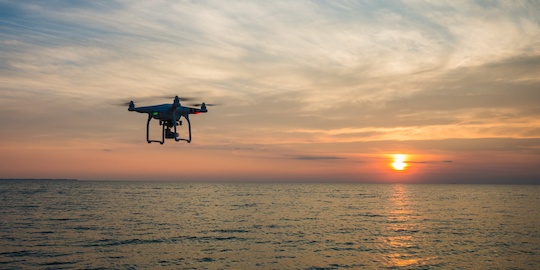Sky-High Precision: How Drone Surveying is Changing Construction
Recently, the construction business has undergone some sort of dramatic transformation, supported by technological improvements which might be reshaping just how projects are planned, executed, and watched. Among these improvements, drone surveying has emerged as some sort of game-changer, offering unrivaled benefits in accuracy and reliability and efficiency. From providing detailed site assessments to facilitating real-time data selection, drones are reforming the way structure professionals approach their particular work, ultimately resulting in smarter decision-making in addition to cost savings.

As the particular demand for sleek processes and enhanced precision grows, learning the applications and benefits of drone surveying will become increasingly essential. Whether a seasoned building manager or a newcomer to the market, grasping the basic principles associated with drone technology and even its implications regarding surveying can offer a significant edge. Inside this article, you will explore the deep impact of drone surveying on construction and delve into various aspects, which include its benefits, typically the technology behind that, and how it really is set to form the ongoing future of the industry.
Benefits of Drone Surveying
Drone surveying offers many advantages that usually are transforming the structure landscape. One of many rewards is enhanced accuracy and reliability. Drones utilize innovative technology such since GPS and high-resolution cameras, which enable them to capture specific data and create detailed maps. This increased accuracy lowers errors that may take place with traditional surveying methods, resulting in a lot more reliable project final results. Additionally, the capability to conduct online surveys in a quicker timeframe allows assignments to move in advance more proficiently.
Cost savings are another important benefit associated along with drone surveying. Applying drone technology will reduce labor charges and the dependence on expensive equipment commonly required for classic surveys. Drones could cover large regions quickly, collecting information minus the extensive personnel historically needed intended for ground surveys. Subsequently, the reduced period and resources lead to lower overall task costs, making drone surveying an interesting option for construction organizations planning to improve their own bottom line.
Moreover, drone surveying enhances safety on construction web sites. Drones can accessibility difficult or hazardous areas without getting surveyors at chance. This capability will be particularly invaluable in situations where landscape is challenging or perhaps when surveying present structures with potential safety concerns. Simply by minimizing the want for personnel to work in hazardous locations, drone surveying not only defends workers but in addition ensures that information collection is in depth and thorough without jeopardizing safety standards.
Comparing Surveying Methods
Traditional surveying methods have been the cornerstone associated with land measurement intended for many years. Drone Surveyors Gloucestershire as theodolite measurements and overall station surveys require skilled personnel to establish precise details and gather files manually. Drone Surveyors Gloucestershire can easily be time-consuming plus labor-intensive, often causing delays and higher costs for building projects. Additionally, traditional methods are restricted to weather conditions and can find it difficult to include large areas proficiently.
Inside of contrast, drone surveying has introduced the revolutionary way of data collection. Drones equipped with advanced digital cameras and sensors can easily capture vast quantities of information over huge terrains from large altitudes. This aerial perspective not only increases coverage but also allows for better measurements and detailed mapping without the constraints faced by traditional strategies. The ability in order to collect data rapidly enables faster task timelines and even more informed decision-making.
Moreover, typically the integration of smart technology in drone surveying contributes considerably to the reliability and reliability involving data. Drones influence GPS as well as other positioning technologies to produce high-resolution maps and 3D IMAGES models with nominal human input. This level of finely-detailed is challenging to obtain with manual approaches, enhancing the general quality of surveys online. Since the construction market continues to adopt drone technology, the assessment between traditional methods and drone surveying becomes increasingly beneficial for efficiency in addition to effectiveness.
Way forward for Drone Technological innovation
The particular future of drone technology in the construction industry is poised to deliver even greater enhancements that can significantly boost the efficiency plus accuracy of jobs. With advancements on artificial intelligence and even machine learning, drones are expected to come to be more autonomous, permitting for real-time info collection and research without the regular need for human treatment. This can not only streamline workflows although also reduce typically the margin for problem, resulting in safer and more effective design processes.
Moreover, the mixing associated with drones to rising technologies, like Making Information Modeling (BIM) and augmented fact, will offer project managers and technical engineers unprecedented insights into their projects. By merging aerial data grabbed by drones using detailed 3D versions, construction teams will monitor progress, picture potential issues, and make informed decisions faster than ever before. This synergy among technologies will boost collaboration among stakeholders and drive task success.
Finally, as regulations around drone use continue to progress, we can anticipate broader acceptance and integration of drone surveying across different sectors. The lawful frameworks will probably adapt to permit heightened applications of drone technology, including past visual line regarding sight operations plus increased payload abilities. This will open up new possibilities with regard to construction, including superior site inspections and maintenance procedures, ensuring that drones will stay a vital component of the construction scenery for many years to arrive.